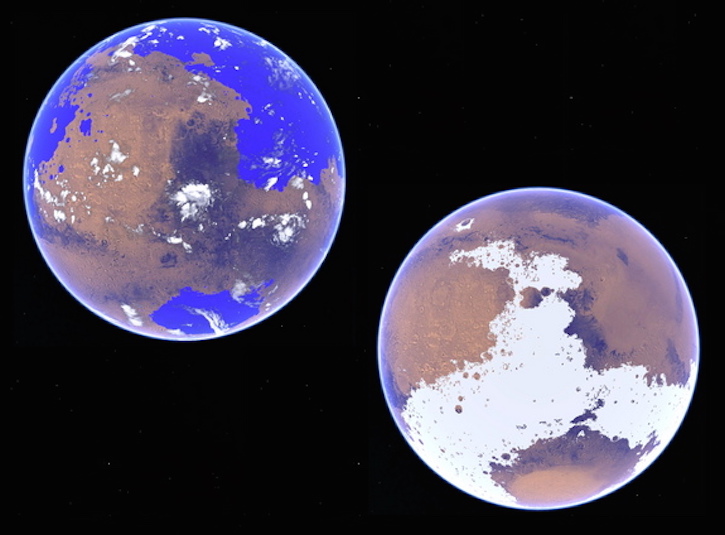Best Space Stories of the Week – June 21, 2015

Crashed comet lander Philae phones home. A dead satellite falls to Earth. Mars shows both methane-laced meteorites and a possibly icy past, and the moon's dust gets a source in the best of this week's space news.
Surprise return of Philae lander
June 14 the Philae Comet Lander broke a long silence by calling in after crash-landing last year. It can only send data when in communication with the Rosetta spacecraft orbiting the comet, so managers hope to move Rosetta closer to grab more consistent measurements. [Full story: Philae Rises! What's Next for Rosetta's Comet Lander?]
Potential sign of life methane spotted in Mars meteorites
Researchers found trapped methane in fragments of volcanic rock from Mars that fell to Earth as meteorites, hinting that the Red Planet could be friendly to microbial life. [Full story: Methane in Mars Meteorites Suggests Possibility of Life]
Lightest alien world found around a normal star
A new planet, which orbits a red dwarf star along with two others, is around half the size of Earth and one-fifteenth its weight — the lightest known exoplanet in a stellar orbit. Researchers pinned down the planet's size by watching its gravitational interactions with its neighbors and star. [Full story: Alien Planet Is Smaller Than Earth and Surprisingly Light]
Get the Space.com Newsletter
Breaking space news, the latest updates on rocket launches, skywatching events and more!
Rainfall satellite tumbles to Earth
The Tropical Rainfall Measuring Mission satellite, launched in 1997, fell out of orbit and burnt up in the atmosphere on June 16 — and at least 12 pieces may have continued down to Earth as debris. [Full story: NASA Satellite Falls Out of Space, Burns Up Over Tropics]
Moon's dust cloud comes from tiny collisions
A cloud of dust shrouding the moon likely came from constant collisions with comet particles, according to data gathered by NASA's Lunar Atmosphere and Dust Environment Explorer. The spacecraft counted 140,000 hits by particles of dust over its 80 days of observation in lower-altitude orbit, and researchers suspect all airless bodies collect such a covering. [Full story: The Moon's Puzzling Dust Cloud Finally Yields an Answer]
Early Mars may have been frigid, not warm
New research suggests that Mars' famous channels could have been sculpted billions of years ago by ice and snow rather than flowing water. 3D atmospheric models generated features more similar to modern-day Mars when dialed to cold and icy instead of warm and temperate, as previous research has suggested. [Full story: Red Planet, Icy World? New Picture of Ancient Mars Emerges]
Email Sarah Lewin at slewin@space.com or follow her @SarahExplains. Follow us @Spacedotcom, Facebook and Google+. Original article on Space.com.
Join our Space Forums to keep talking space on the latest missions, night sky and more! And if you have a news tip, correction or comment, let us know at: community@space.com.

Sarah Lewin started writing for Space.com in June of 2015 as a Staff Writer and became Associate Editor in 2019 . Her work has been featured by Scientific American, IEEE Spectrum, Quanta Magazine, Wired, The Scientist, Science Friday and WGBH's Inside NOVA. Sarah has an MA from NYU's Science, Health and Environmental Reporting Program and an AB in mathematics from Brown University. When not writing, reading or thinking about space, Sarah enjoys musical theatre and mathematical papercraft. She is currently Assistant News Editor at Scientific American. You can follow her on Twitter @SarahExplains.









